What can be sewn from a footer with lycra. What kind of fabric - footer? All about cotton knitwear
The name "footer" is determined by the interweaving of threads in the canvas. Footer - is it? Lined weave is obtained by knitting a lining thread into the fabric from the wrong side. Such threads do not form loops, but are attached to the fabric with broaches, as a result, a texture appears on the wrong side, and then, after an additional technological process- bouffant. This makes the thin footer warm, does not allow the wind to pass through. The footer fabric is especially practical for those working outdoors in the cool season.
What is it in terms of quality? Footer is a knitted fabric made from cotton. It is smooth on top, but may be fleece on the inside. This main feature, which has a footer fabric.
What is it, what other advantages does the fabric have? This is an excellent thermal protection, it retains its shape well and is wear-resistant. In addition, it has the following properties:
1. Well passes air (breathes), as it is made of cotton.
2. Hypoallergenic.
3. The density of the fabric is different, 190 - 210 gr.m2, some companies supply with a surface density of 240 - 360 gr.m2.
4. Resistant to pilling and puffing.
The composition of modern products may include not only the footer, but also additives: viscose, polyester, lycra. They do not allow them to fade, stretch, products become stronger. Used to be natural materials, in Lately most of clothing is made using mixed and made according to modern technologies.
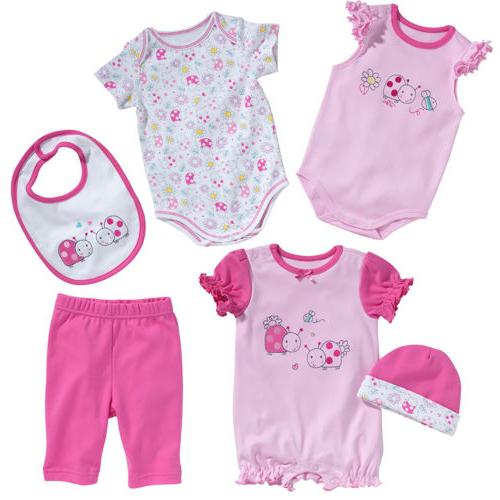
Such additives are needed to improve quality and consumer demand. For example, lycra is a soft, highly stretchable, shape-holding, thin and flexible fiber. It is designed specifically for athletes and energetic people involved in sports. Provides a feeling of coolness and comfort throughout the day. The footer fabric with lycra is more wear-resistant, the products become elastic, they are extended
Application
Footer fabric - what is it and what is it best to use? It is used for sewing spectacular and elegant things for kids: sliders, overalls, vests - because its composition is natural. For older children: pants, blouses, bright colored dresses. The footer can be plain and stuffed. For adults, underwear is sewn from it, warm suits and bathrobes.

He found his application in the manufacture outerwear: thick sweatshirts, home and sportswear. Home clothes - soft sets, pajamas, from a denser fiber - sweaters, jackets.
The material is widely used for the production of sportswear. The footer fabric is quite strong, does not tear under loads during physical activities, withstands even the most intense movements. Comfortable clothing allows you to move freely. For fitness and aerobics, footer fabric with lycra is used. The advantages are good breathability (the fabric breathes) and moisture absorption (the fabric absorbs sweat well). therefore, many active people prefer to buy footer fabric with lycra, which is used for the production of clothing for extreme sports, outdoor activities and tourism. When choosing warm and sporty new clothes or outfits for children, you should pay attention to this material. It is easy to buy footer fabric, the choice is large, and the price is quite affordable.
Based . It is used in the production of various clothes: children's (including for newborns), women's, men's and sports. Why is this material so good and what is it like?
Composition and description
Let's first understand what it is. The footer is a thick cotton fabric with a fleece. Due to the special weave of the futurized thread, you can find a pile on the wrong side of it. Thanks to him, things become very warm and soft, pleasant to the body. These are the main positive properties of the lined weave.
If we talk about others, then it is worth noting non-allergenicity and breathability. We have seen such features in and . The cotton base makes itself felt. As I wrote above, one cannot remain silent about the softness and thermal insulation of this material. It is also dimensionally stable and pleasant to the touch.
What product is sewn from footer
Such positive features make the footer an indispensable fabric in the production of a wide variety of clothing. For the smallest kids, it is used in sewing warm sliders, bodysuits, sweaters, hats, panties, etc. In adult products, this material is used as the main material in tight turtlenecks, sweatshirts, pants, dresses, warm underwear, bathrobes, etc. . Sportswear is also sewn from it, which are highly valued due to such a property as breathability.
The density of the web is from 180 to 210 g.
We are sure that you will like the footer with its softness and environmental friendliness. It is pleasant to the body and does not cause irritation even in people with allergies. When choosing warm clothes for yourself and your children, stop at things made from this fabric.
Photos of examples
Children's blouse
Baby overalls

Women's sports pants

Hoodies

Footer - knitted, delicate material based on cotton. The upper part of the product is smooth, but the inside may contain pile. This is the main difference between the lining fabric.
What are the benefits of a footer?
The footer material perfectly contains heat, does not change shape during wear, and is wear-resistant. It has the following positive properties:
- it is hygroscopic;
- does not cause irritation on the skin;
- has a wide selection of products of different densities;
- resistant to pellets, puffs, does not shrink after washing.
Pink neon lycra footer consists of a 2-thread loop weaving pattern, which is a knitted fabric with two interlaced threads forming loops on the wrong side. A women's tailcoat made of footer fabric with lycra will allow any woman to feel comfortable and stylish in any situation. The coat does not allow air to pass through, which allows you to keep warm in cool weather.
The practical composition of the product will allow clothing long years have original appearance. At the heart of the footer fabric of modern production, you can often find a mixture synthetic fibers made with the latest technology. Such additives help improve quality, which affects consumer demand. . The addition of lycra contributes to the elasticity, softness and stability of the shape of products during wear. To know how such products look like, it is worth considering the footer material with lycra in the photo.
Also available is a 3-thread footer. Read more about it.
fabric structure
Lycra fiber has a thin and flexible structure, which gives strength to the product and extends its service life. Footer with lycra, reviews of which say that the use this material gives a wide opportunity to change the properties of the material only in a positive direction, designed for people who lead an active lifestyle, to provide better hygroscopicity and a feeling of lightness during sports activities. Footer material with lycra - the most resistant to wear, products become elastic, durable.
Knitted footer with lycra consists of purl knitting of the footer surface with the formation of a loop broach. The material is famous for its high heat resistance, wear resistance and resistance to deformation. The rich color palette of the fabric allows not only to create products that are pleasant to the touch, but also to be perfectly combined with other wardrobe products. Also, the fabric is not harmful to health and is suitable for wear by both children and adults.
Footer 2 x thread with lycra - a durable material with a pile back side in a combination of polyester or lycra. Lycra promotes stretching of the fabric, gives a decorative appearance and keeps its shape. From the footer they make:
- tracksuits;
- pajamas;
- bathrobes;
- casual and going out clothes;
- things for children.
Sweater with lycra is easy to buy thanks to a wide selection and affordable price, with the possibility of choosing the material according to the density and composition of the incoming filler. Footer with lycra can be bought wholesale or retail. The fabric can be plain, printed, with and without fleece, with lycra and without lycra.
Many people with sensitive, delicate skin are familiar with the unpleasant sensations that warm but rough tissues cause. A great alternative to them is a cotton footer.
What is a footer
One of the most delicate and body-friendly fabrics is called the footer. It is a natural cotton fabric, smooth on the outside, soft and delicate on the inside, thanks to which it is surprisingly comfortable.
She owes these qualities special weave of fabric threads in production. On the wrong side, with the help of looped broaches, the lining threads are attached to the base of the canvas, as a result of which a kind of wrong texture is formed. Thanks to modern technologies, this texture is often made in the form of a fleece, and the front side looks like a culinary surface.
footer product
The history of the invention of footer fabric
Unfortunately, to our time, history has not conveyed either the name or even the name of the first manufactory, where this comfortable and durable fabric was invented. One can only assume that it appeared in one of the countries where in ancient times cotton was processed for the production of fabric: India, Mexico or Egypt.

Varieties and properties of the footer
Depending on the number of footer threads knitted into the fabric, there are types of footer:
- Double thread;
- Three-thread
- with a thick fleece (reminiscent of fabric);
- with a thin fleece (reminiscent of the fabric of a bike).
- With the addition of synthetic threads.
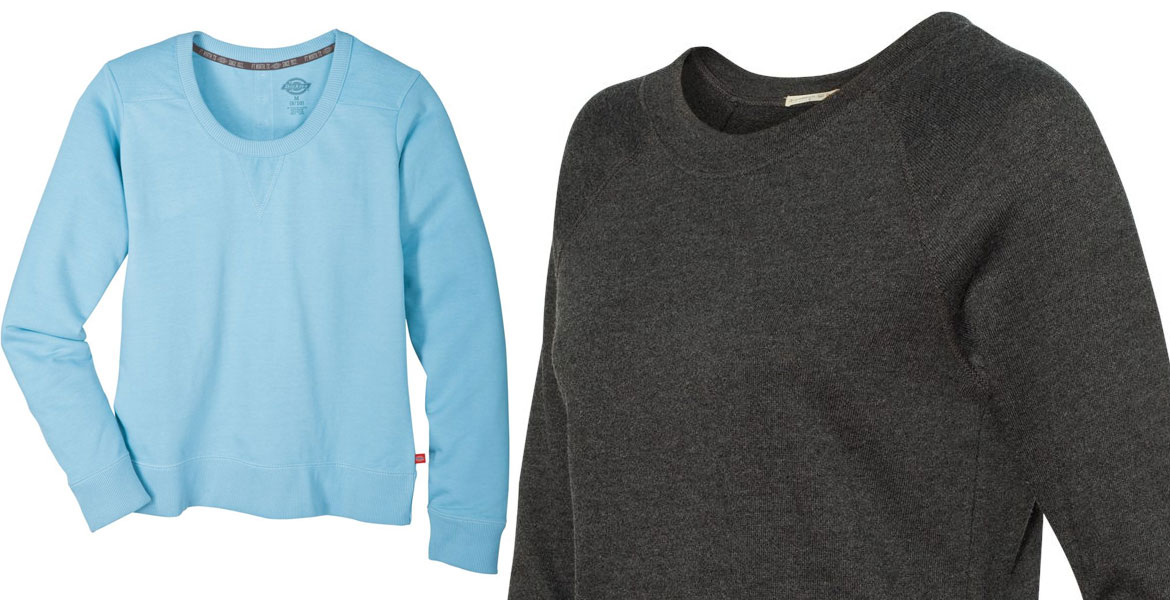
Footer fabric properties
Footer, as mentioned earlier, is natural fabric: is he made from cotton. Thanks to this, the fabric allows the skin to "breathe", while retaining heat perfectly. The footer absorbs moisture well and, at the same time, remains hypoallergenic. It also retains its shape perfectly, thanks to which the products traction is not formed. Another important quality of this fabric is durability: puffs, scuffs and spools do not appear on products.
Sometimes lycra is added to the footer or, thereby, improving its quality. Thanks to the introduction of synthetic threads, the footer acquires an external shine and elasticity, becomes more resistant to deformation, strong and durable.
The only downside to the material is sensitivity to high temperatures and direct sunlight, which destroy the fibers and, thereby, spoil the products from the footer.
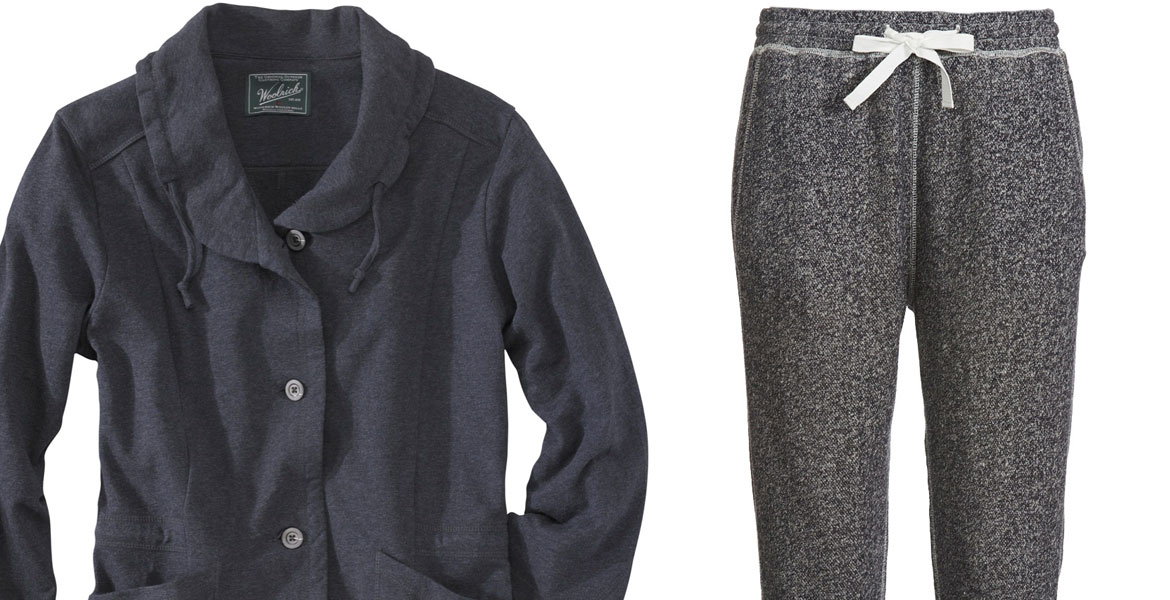
Footer application
The density of the footer is quite different: from 365 gr/m to 190 gr/m- therefore it has found very wide application. Often, clothes for children are sewn from this fabric, because not every material can boast such a combination of durability and hypoallergenicity that is necessary for babies. On the shelves you can often see colored dresses in bright colors, sliders, original trousers and unusual overalls - a wide range for fashionable mothers and their children.
Widespread and bathrobes made of footer. Firstly, they are really very cozy and comfortable at home, and secondly, the durability inherent in the material is a very important factor for this kind of homewear.
You can also find sweaters, sweatshirts, pullovers and cardigans from the footer at least. This is a real find for people whose skin is irritated warm clothes from wool. Thanks to the soft fleece, the footer fits perfectly to the body, without causing itching and burning, and at the same time perfectly retains heat.
Another widespread type of clothing made from thin footer is tracksuits. In this case, two properties of the material contribute to such "popularity": firstly, it allows the skin to breathe, and secondly, the footer is a surprisingly strong fabric that can withstand loads when exercise. And, importantly, this will not affect the appearance of the product in any way: intensive movements won't cause breaks or creases, which cannot be ironed out.
In short, the fabric is not targeted at one specific consumer audience: footer is universal, both for models of clothes, and for its buyers.
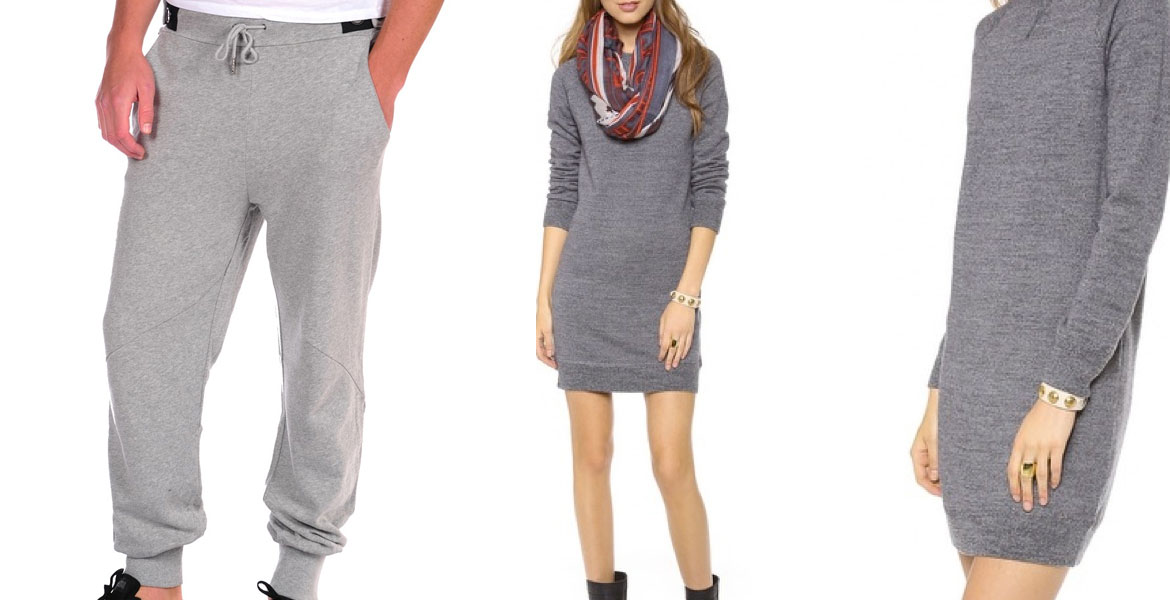
Footer Care
It's no secret to anyone that proper care for a product - the guarantor of its durability and good appearance. That is why it is necessary to take into account the type of fabric from which the thing is sewn.
The first thing to do before washing is to pay attention to the product label, which will indicate certain washing and ironing rules. If there are no characters there, the rules for leaving are as follows:
- Clothes made of thick footer should be washed at a temperature 50 - 60 °С, from thin - at 30 - 40 °C. If the laundry is white, a universal powder will do, and if it is colored, it is better to choose delicate detergent, liquid, or washing powder for colored items. It is categorically not recommended to boil things from the footer: you can seriously spoil the product.
- It is better to dry the footer in natural conditions, ideal if straight Sun rays thus will not fall on the product. If the linen is sewn from a thick fabric, with a fleece, it is better to hang it out to dry semi-damp.
- Need to iron products in cotton mode, if the fabric is thick, and in the "silk" or "delicate" mode, so as not to damage the fibers, if thin.
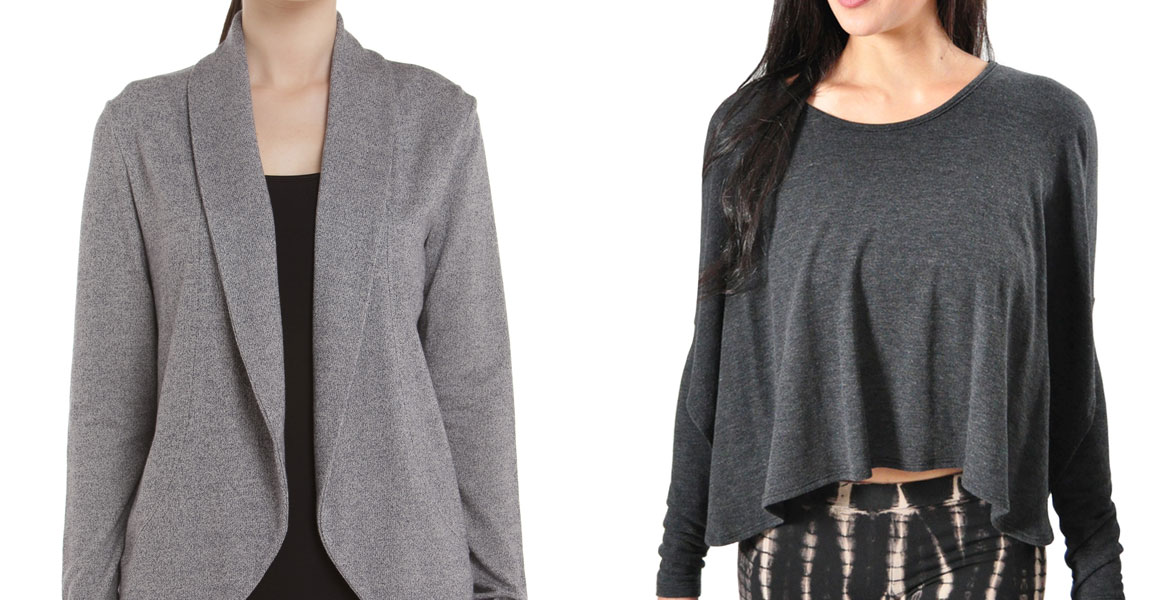
One of the most "cozy" materials, footer is a real hit in the world of fabrics. Choosing products made from it, you get comfort and harmony that will envelop not only you, but also your loved ones.
Recently, things made from footer have gained considerable popularity. However, rarely does anyone know what a footer fabric is. What it is, how it is made and where it is used can be found in the information presented in this article.
The composition of the fabric footer
The footer is one of the most pleasant and comfortable fabrics for the body. This cotton jersey is smooth on the front and soft and delicate on the back. Thanks to this, things made of footer are pleasant to the body and comfortable.
Usually made from cotton. However, in some types of footer, some synthetic fibers are added in order to increase elasticity and wear resistance. This material is made on looms using two threads. From simple threads they make the basis of the canvas, and from the lining they create the inner side with a fleece. It is this technology that allows you to make the product smooth on the outside and soft fleece on the inside.
History of occurrence
Unfortunately, history has not preserved information about how and where this material was first created. It is assumed that it arose either after the end of the war in the USSR, or abroad in the first half of the 20th century.
There is also a version that the fabric has Egyptian or Indian roots. This version arose due to the fact that countries traditionally made cotton linen, as they themselves grew raw materials for them. However, there is a nuance that speaks against it: at that time there were no well-developed technologies in these regions.
But, regardless of who was the inventor of this fabric, to this day humanity is grateful to him, who gladly uses the footer to create things. As for the very name of the material, it clearly has German roots. In translation, Futter means lining fabric.
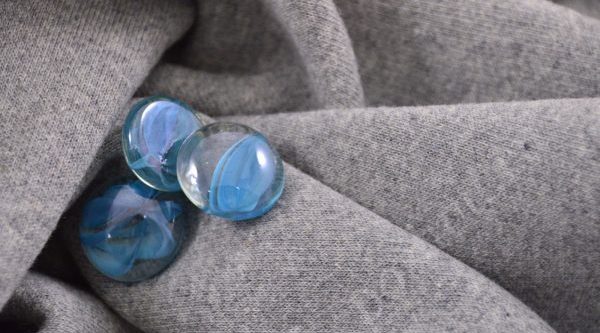
Footer - types of fabric
Depending on the quality and quantity of threads used, there are several types of footer that have various properties and strength. So, the material is divided:
- Footer in one thread- This is the thinnest of all types of fabric. This type of material is made exclusively from natural cotton and, due to its harmlessness, is used for sewing children's clothing.
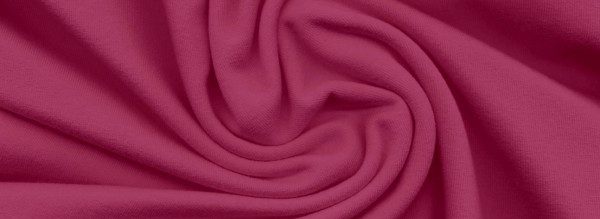
- The footer in two threads is somewhat denser and has a noticeable pile on the wrong side. Often this type is a combination of cotton with lycra or polyester. The lycra included in the composition contributes to the fact that the knitwear becomes more elastic and does not lose its shape. In addition, the canvas becomes more durable and decorative. It is also called footer loop or looped footer.
Footer with lycra is used for tailoring tracksuits, bathrobes, sleepwear, children's clothing, casual and formal wear.
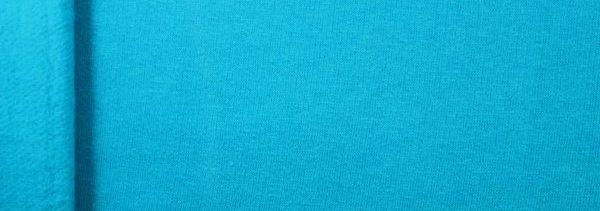
- The footer in three threads is the most dense type of material, which has a thick pile on the wrong side. The fabric is very warm and is made from a tandem of cotton with polyester, wool or lycra.
Footer with fleece - what is it?
- this is the most suitable option for sewing outerwear and warm tracksuits. The most relevant type of three-strand footer is gray melange. As a rule, 80% cotton and 20% other additives are included in its composition. Pleasant shades of knitwear make it possible to produce not only warm and comfortable, but also beautiful products that will perfectly fit into any wardrobe. In addition, melange fabrics are not easily soiled, which is important for sports and home wear.

Main characteristics
The footer is a very warm and comfortable option for knitwear. FROM inside material has a soft fleece, which makes it pleasant for human body. The pile is fluffy long and warm.
Advantages:
- Environmental friendliness and naturalness. This composition allows you to sew clothes even for children;
- Hygroscopicity. Perfectly absorbs moisture;
- Hypoallergenic. Does not provoke people with sensitive skin the occurrence of allergies;
- Breathability. Due to the fact that the fabric is made from natural raw materials, it saves heat, providing free access of oxygen to the skin;
- hygiene;
- Antibacterial;
- Ease of maintenance. Do not require compliance with any special conditions in care;
- resistance to deformation. The fabric holds its shape well;
- Strength;
- Wear resistance. One of the main qualities is durability and wear resistance: there are no scuffs, spools and puffs on things.
In addition, the material perfectly saves heat and warms. These are the advantages that the footer fabric has, and from the minuses, some properties can be distinguished that must be taken into account during operation.
Disadvantages:
- Under the influence of ultraviolet rays, the tissue is destroyed;
- Intolerance to high temperatures.
Scope of use
Footer fabric is most often used in light industry. Its features have been used in the creation of the following products:
- Infant clothes. Warm undershirts, sliders, pants, sweaters, bodysuits, characterized by softness, comfort and hypoallergenicity;
- Baby diapers. They are distinguished by softness, delicacy and warmth. They are especially valued for their excellent ability to absorb moisture. In addition, they do not form hard folds during swaddling, which is important for the delicate skin of newborns;
- Children's knitwear. Both children and parents like shirts, pants, sundresses, sweaters and other products due to their softness, comfort, wear resistance and easy care;
- Sports stuff. Tracksuits, made of footer, are valued for their strength and excellent moisture-absorbing properties;
- Homewear. Pajamas, nightgowns and bathrobes are comfortable, easy to move around and don't irritate the skin.

How to properly care for sweater clothes
Everyone knows that good care is the key to durability and excellent appearance. Therefore, it is worth considering the material from which the product is made.
Before the first wash, be sure to read the label. Washing and ironing conditions are written on it.
In situations where for some reason nothing is indicated there, the following rules must be followed:
- Things from a thick linen are washed at 50-60°C, from a thin linen - at 40°C. If the product white color, then any powder will do, and in the case of colored ones, it is better to take a special detergent. The footer is forbidden to boil, since, most likely, such actions will spoil it;
- Dry in natural conditions. Well, if the direct rays of the sun will not fall on it. If the product is thick and heavy, then it is better to hang it to dry in a semi-dry state;
- You can iron only in the "cotton" position, if the material is dense, and in the "silk" position, if thin;
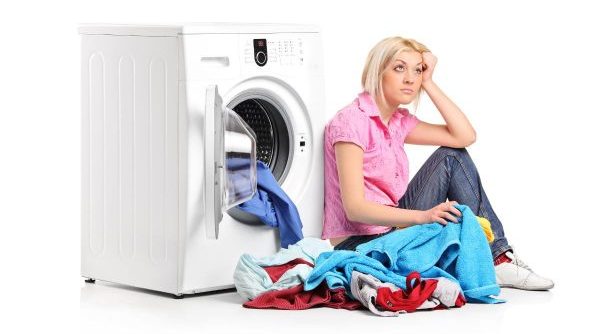
When purchasing things from the footer, it is better to take one or two sizes larger than required. This approach will protect against unpleasant surprises after washing. It is worth considering that low cost may indicate low density. In addition, a cheap footer may contain a lot of synthetics. Such material does not store heat and is unpleasant for the body.
Quality footer should have at least 90% cotton.
According to the method of dressing, it is divided into three types:
- Peñe.
- Openend.
Openend is considered the worst. A thing made from such a material has a lower cost, a poorer appearance and fragility. In addition, you can reduce the price by using cheap dyes. However, such products quickly lose color in the sun, and discolored areas may appear after washing. Dishonest manufacturers make artificial bouffant, which is actually glued cotton wool. Most likely, after the first wash, such things will lose their fleece.
- Step by step recipes with photos
- Dish of legs and potatoes
- Pork Wiener Schnitzel
- Chicken Oatmeal Soup for Kids Oatmeal Chicken Soup
- What does it take to damage
- What is in cucumber
- Red (white) currant jelly
- The structure of the neon atom. Neon - what is it? Where is neon used Obtaining neon
- Electronic configuration of an atom
- Organic chemistry What science studies organic chemistry
- What is the difference between a teacher and a teacher - definition, features of professional activity Teacher and teacher what is the difference
- Markers of disorders of the nervous system What can affect the result
- Chirality and optical activity
- “A revolution is possible in the energy sector”: what scared the “generals” the re-elected Rafinat Yarullin
- Strong and weak electrolytes
- Chemical potentials of ideal gases
- Silk-screen printing wallpaper in the interior Flower wallpaper for walls silk-screen printing
- Chemical theory of solutions D
- Difference between adsorption and gel permeation chromatography
- Chemical theory of solutions Basic provisions of Mendeleev's theory of dissolution









